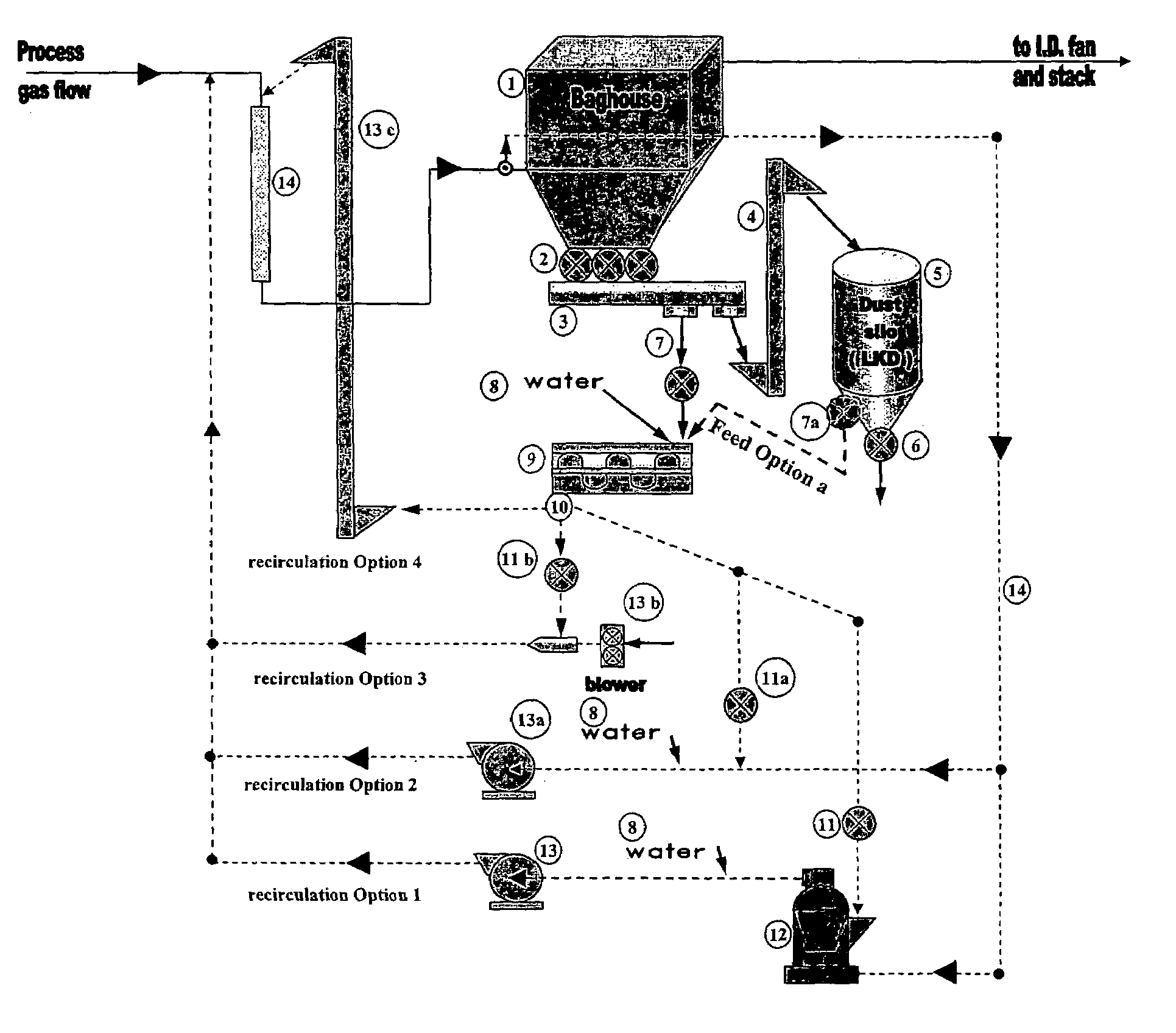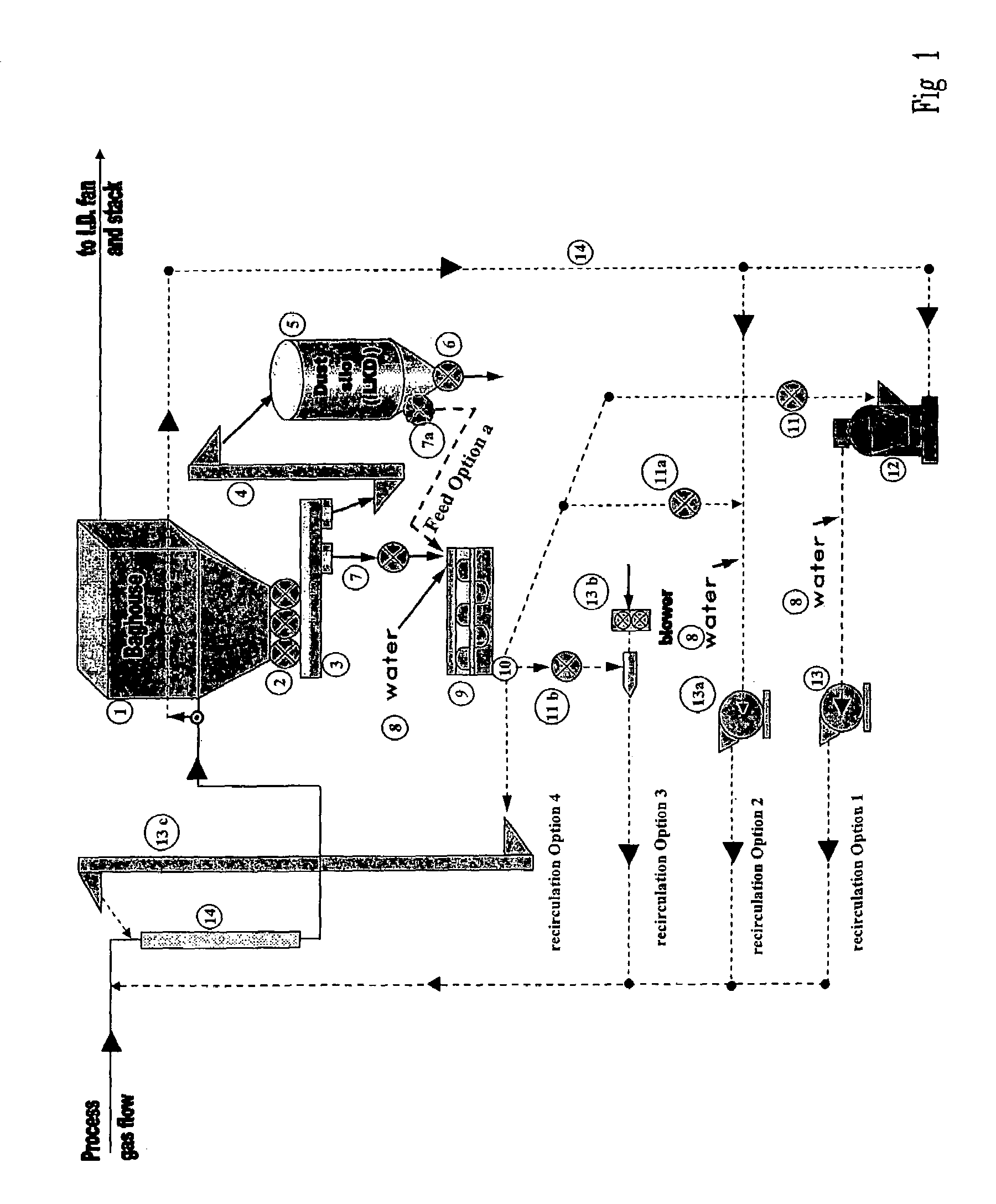Hydrated lime kiln dust recirculation method for gas scrubbing
a technology of hydrated lime and kiln dust, applied in the field of hydrocarbons, can solve problems such as pollution emission
- Summary
- Abstract
- Description
- Claims
- Application Information
AI Technical Summary
Benefits of technology
Problems solved by technology
Method used
Image
Examples
Embodiment Construction
[0025]Referring now to FIG. 1, numeral 10 denotes the overall process. A baghouse 12 collects lime kiln dust from the lime / cement calcining procedure (not shown). From the baghouse 12 the dust is passed down to a collection point 14 which collection point 14 collects kiln dust material from all other sources (the other sources are not shown). The conveyance of the material from the baghouse to the collection point 14 is conducted in an airtight arrangement with the airlock being denoted by numeral 16. The collected dust is then passed to a conveyor 18. The conveyor may be any type of suitable conveyor such as a screw conveyor, bucket conveyor or any other suitable conveyor known to those skilled in the art. The material may be then transferred to a silo 20. The silo is equipped with a discharge device denoted by numeral 22. In the embodiment illustrated, the silo 22 includes a feeder 24 which is an optional feature to augment the feed that otherwise is delivered by feeder 26 directl...
PUM
| Property | Measurement | Unit |
|---|---|---|
| temperature | aaaaa | aaaaa |
| scrubbing temperature | aaaaa | aaaaa |
| temperature | aaaaa | aaaaa |
Abstract
Description
Claims
Application Information
 Login to View More
Login to View More - R&D
- Intellectual Property
- Life Sciences
- Materials
- Tech Scout
- Unparalleled Data Quality
- Higher Quality Content
- 60% Fewer Hallucinations
Browse by: Latest US Patents, China's latest patents, Technical Efficacy Thesaurus, Application Domain, Technology Topic, Popular Technical Reports.
© 2025 PatSnap. All rights reserved.Legal|Privacy policy|Modern Slavery Act Transparency Statement|Sitemap|About US| Contact US: help@patsnap.com


